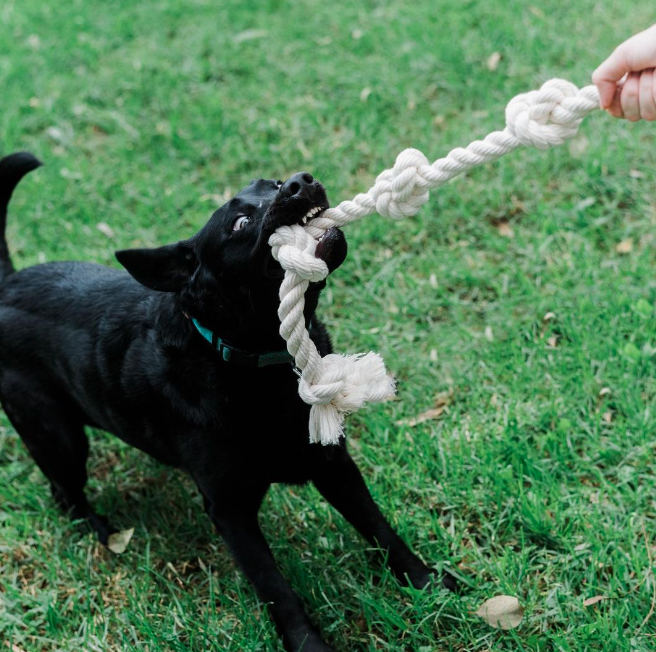UPDATED December 10, 2025
The pet food industry has a huge impact on our environment. For example, in the US alone, 300 million pounds of pet food and treat bags are manufactured per year with 99% of those bags being non-recyclable with no chance of avoiding the landfill. With all this food consumption in mind, it's easy to see how pet food can contribute to the climate crisis.
As pet owners, we hold more power than we may think. By being conscious consumers, we can take climate action by supporting pet food companies that create sustainable pet food and consider the environmental damage their animal protein manufacturing processes may have.
Do you want to be a more responsible pet owner and help reduce your pet's ecological pawprint? Read on to learn more about how you can reduce the environmental impact of dog food.
How is the Pet Food Industry Fueling the Climate Crisis?
With millions of pet owners around the world feeding their dogs and cats meat roughly twice a day, it's easy to see how meat consumption is getting out of hand. In fact, if dogs and cats made up their own country, they would rank 5th in global meat consumption. That's a lot of animal protein. In addition, your pets don't eat animal by-products - also known as the meat humans don't want. Rather, more and more pet owners are feeding their pets human-grade animal ingredients. In other words, farm animals are being bred and killed to produce pet food. The pet food production industry has huge environmental impacts.
Environmental Impact Of Pet Food
According to statistics, animal agriculture is responsible for roughly 14.5% of global greenhouse gas emissions. Further research indicates that the pet food industry produces almost 3% of the total carbon dioxide (CO2) emissions from animal agriculture. To paint a scary picture, feeding our pet is as environmentally damaging as pumping the exhaust of 14 million cars in greenhouse gas into the atmosphere for a year. Plus, we need to consider the environmental impacts of land use, fossil fuels, phosphates, water, and other natural resources that are used for human-grade meat production. Looking toward the future, it's crucial to take action to reduce the environmental impact of pet food. Otherwise, greenhouse gas emissions will exceed their limit in the near future and the climate crisis will only get worse.
How to Make Your Pet Food More Sustainable
As much as we love our furry friends, we can't deny their environmental impact and how dogs and cats contribute to the climate crisis. Let's take a look at how we can make pet food and kibble more sustainable so that your planet wins too.
Consider your Pet's Needs
Dogs and cats have different nutritional requirements. Your pet's age and health status can influence their nutrient requirements too. When considering a more sustainable diet, be sure to take into account what your dog or cat needs to be nutritionally complete.
Shop Locally
When possible, shop locally for pet food. Not only are local products more likely to be fresher, you'll also help support your local economy in sustainable ways.
Choose Environmentally-Friendly Packaging
Sustainable pet food is not just about what you're feeding dogs and cats. It's also important to consider how pet food is packaged. We source products that are packaged with previously recycled materials and are easily recyclable or composted.
Avoid Artificial Ingredients
Just like human food, it's best to avoid pet foods that contain artificial flavors, preservatives, or colors. Aim for organic products and whole foods that are made without the use of synthetic pesticides or fertilizers.
Stay Away From Beef and Lamb
Beef is the number one food contributor to our current climate crisis. We recommend staying away from beef and lamb, which is the 2nd runner up, unfortunately. What are some good protein alternatives to beef? Check out our post on Choosing the Best Protein for Your Dog.
Make Your Own Pet Food
A great way to combat climate change is to make your own pet food, yet few people do. While this requires more time and effort, it's a great way to reduce carbon emissions and fight climate change as well as give your dogs or cats a healthier, whole food-based diet. Homemade diets ensure you get to control the ingredients so there's no need to worry about unwanted preservatives, fillers, and shelf stabilizers. When making your meat-based pet food, you can choose what meat to use based on what your dogs and cats prefer. Rather than making your pet food with red meat which fuels beef production and carbon emissions, you can turn to alternative protein sources such as chicken, duck, turkey, and rabbit in the same amount. Why not add often over-looked by-products that people discard thinking they aren't good for human consumption? In fact this type of animal meat is very inexpensive and also extremely nutritious for dogs. Or consider rotating with pea protein and a plant-based diet. Whatever you decide, when making homemade pet food, make sure you thoroughly understand your pet's nutritional requirements first and foremost. A good reference would be the American Veterinary Medical Association to discuss pet foods for your dog or cat.
The following dog supplements can help. Be sure to consult with your veterinarian prior to starting any new supplements, as individual needs and responses vary.
Dog Supplement for Homemade Food
Make your own pet food with this dog supplement for homemade food made by holistic vet, Dr. Ruth Roberts. Finally, you can feed your dog human-grade ingredients without it being overly expensive, complicated, or environmentally damaging. Making your pet food has never been easier. Simply source your own meat and cook your ingredients, then add this dog supplement for homemade diets.
Topping off your pup's meal with an invasive species based meal topper, is an interesting option both in taste and nutritional value and is great for the planet.
Consider making homemade dog and cat treats too!
Pet ownership isn't easy. We love and care for our pets, but ultimately we are responsible for their environmental impact. The bottom line is that you can reduce greenhouse gas emissions and their carbon footprint by making smart food choices for your pets.
NEXT, check out How to Choose Sustainable Dog Toys.








